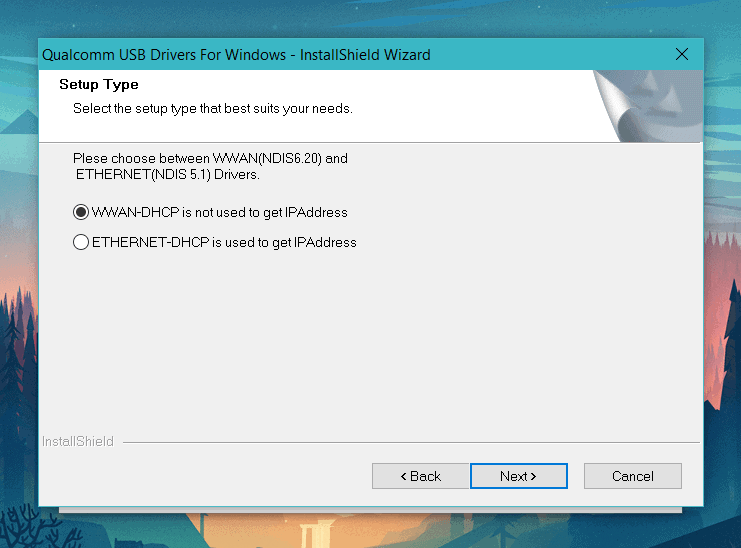

- Qualcomm hs usb qdloader 9008 fix how to#
- Qualcomm hs usb qdloader 9008 fix driver#
- Qualcomm hs usb qdloader 9008 fix for android#
- Qualcomm hs usb qdloader 9008 fix android#
- Qualcomm hs usb qdloader 9008 fix software#
Open Command Prompt on your computer and type the following code:ī).
Qualcomm hs usb qdloader 9008 fix driver#
If you are running Windows 8 or newer versions, you must turn off ‘ Driver Signature Verification’ on your PC. (Settings > About Phone > Build number > Tap it 7 times to become developer Settings > Developer Options > USB Debugging.) Qualcomm hs usb qdloader 9008 fix android#
You need to enable USB Debugging mode to connect your Android phone to computer. Qualcomm hs usb qdloader 9008 fix how to#
ADB drivers! You can follow our guide on how to install the latest ADB drivers on your PC. The instructions are given below for Windows PC only (Windows 7, 8, 8.1, 10). 
In that case, your device must be boot into Emergency Download mode and recognized as ‘ Qualcomm HS-USB QDLoader 9008 ‘by your Windows PC’s Device Manager. However, if your device has a Qualcomm Snapdragon processor, you can easily install the stock firmware using QPST tool to recover your device from the bricked condition. This is because the standard USB driver won’t be able to recognize your device once it is connected to the PC.

In a hard brick, tools like Odin flash utility, and Nokia OST LA doesn’t work. But if your device got bricked and it is no more functional, the Qualcomm HS-USB QDLoader 9008 Driver can help you to get your device to its stock position. However, the drivers provided by OEMs are functional only when the device is in a fully working condition.
Qualcomm hs usb qdloader 9008 fix software#
These drivers come as pre-installed software on the device or a standalone executable application. If one command doesn’t work, try another.7 Any query? Why Qualcomm HS-USB QDLoader 9008 Drivers?Įvery company releases its standard USB Drivers for their devices.
Type the following command and hit enter to enter EDL mode. Use ADB & Fastboot tool to write commands as we’ve mentioned in the first step. Switch off your device and go to Fastboot mode by press and hold the Power + Volume Down button together for a few seconds until the Mi logo or Rabbit logo appears. Use Fastboot to Boot EDL mode on any smartphones Finally, you can flash the firmware on your device via the Mi Flash Tool.Ģ. If the driver works properly, it will detect Qualcomm HS USB Qdloader 9008. Head over to the Device Manager option on the PC. Now, your device should go to EDL mode. Select the Open command window here option and type in the following command, then hit enter. Go to the installed ADB folder on your PC > press and hold the Shift button + right-click. Allow USB Debugging on the phone by tapping on the OK button. Connect the phone to the computer using a USB cable. We hope you’ve already enabled USB Debugging. But the USB Debugging should be enabled on the device and connected to the computer. Qualcomm hs usb qdloader 9008 fix for android#
Install ADB and Fastboot Tool on the PC.ĪDB stands for Android Debug Bridge which can be used to boot into EDL mode on your device. This guide will only work on any devices with Qualcomm SoC. But before going to the steps below, let’s take a look at the requirements as well. We have shared 5 methods to enter into EDL Mode, using ADB Commands, using fastboot mode, using hardware buttons, using Deep Flash Cable, and PCB Test Points. 5 Methods To Boot EDL mode on any Qualcomm Device Hopefully, everything will be right back on track, and you will be saved from a trip to the service center. After this, you could make use of the provided steps to flash the stock firmware. So if at any point in time you mess up big time, boot your Qualcomm device to EDL mode using the above-mentioned tips. This would then pave the way for force flashing the firmware via the provided tool. Those devices are then said to be hard-bricked.Īnd in that case, you could only bring back your device to normal working condition by booting it to EDL mode. You are not always in luck, and sometimes your device will refuse to boot to either of these two modes. The easiest escape route involves booting the device to Fastboot or Download Mode. In that case, your device ends up in a boot loop (or gets soft-bricked). When you flash incorrect software or make some system-level modifications in a manner that wasn’t intended, it affects the device’s normal functioning. So, connect your device to EDL, launch the tool, and flash the associated firmware file. These include the QPST, QFIL, MSMDownload, etc., which have been released by the OEM themselves or have been leaked. Some smartphone manufacturers like OnePlus and Xiaomi have a specific set of tools just for this very purpose regarding the flashing part. Once your device is connected in an EDL mode to your PC, it will be recognized as Qualcomm HS-USB QDLoader 9008. Or some Xiaomi devices also use the Deep Flash Cable in this regard. The only other escape route involves the use of Test Point mode.







 0 kommentar(er)
0 kommentar(er)
